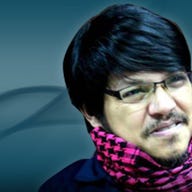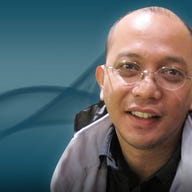How India is doing IT


The other week, I had the opportunity to travel to India upon the invitation of tech company HP. It was my first time to the world's IT outsourcing capital, and I was eager to find out how it was able to discover its niche in the world market, and how the Philippines--which is also marketing itself as an outsourcing hub--can learn from India's success story.
I anticipated it would be an educational trip since we would be going to Bangalore, referred to as the Silicon Valley of the East. Having read the book The World is Flat and seen the documentary that preceded it by New York Times columnist Thomas Friedman, I had always wanted to retrace his journey which incidentally started with this city.
But first, allow me to narrate what transpired from the very start.
My media colleague Erwin Oliva of Inquirer.net and I almost didn't make it to the subcontinent when a heavy downpour in Manila delayed the landing of airplanes at the airport by at least two hours.
By lift-off time, we were hoping that we could still catch our connecting flight in Singapore. But we arrived there at about 8pm, so we weren't allowed to board the 8.15pm flight to Bangalore. Singapore Airlines booked us in a local hotel, and we had no recourse but to stay overnight in the Lion City. So instead of going to India, we ended up spending our first day in Little India where our hotel was located.
As lunch was not included in our accommodation, I contacted my cousin Gary C. Soriano who's working in Singapore as a consultant for Microsoft. He and his wife, Wen, took me out for a hearty lunch at the Raffles City Mall.
That night, we made sure we were at Changi Airport to catch our SQ flight to India. We finally arrived in Bangalore around midnight Tuesday, and despite the chaotic atmosphere that pervaded the airport, it immediately gave us an idea of how large India has become in the IT field. I realized this when we looked for our names in the long list of passengers scheduled for pick-up: almost all IT companies you could think of were listed!
HP put us up at a nearby hotel, the luxurious Leela Palace Kempinski Bangalore. Kelvin Tan, HP marketing director for Southeast Asia, was there to greet us even though it was already past midnight. He then told us we could stay for another day so we could make up for lost time after being stranded in Singapore.
The following morning, HP executives took us to their spanking new building that houses the company's system technology and software division (STSD). There, executives showed us how an army of Indian software engineers are developing cutting-edge solutions.
The workforce is almost entirely made up of Indians, the country's creme de la creme , and each one of them is encouraged to produce patents and original solutions. In fact, certificates of recognition are displayed in one area of the building to spur more creativity and innovation among its employees.
Also in the same building, customers are allowed to test various solutions that have been developed and are encouraged as well to pitch in their ideas to enhance the quality of the software products.
The sessions lasted for a day and as darkness fell, we returned to the hotel to have dinner and to send off the rest of our colleagues from other Southeast Asian countries.
I then retreated to my room to charge a new Kodak HD-capable 12-megapixel digital camera that was loaned to me as a review unit. It had almost run out of power so I clearly remember charging it.
The following Wednesday morning, I woke up to see that the digicam was already fully charged. I then took some videos and photos from the hotel veranda and placed the camera on the table inside my room. It was the last time that I would get a glimpse of it as it would be gone by the time I returned to my room. But that's another story.
On the afternoon before our scheduled departure at Thursday midnight, we motored to the HP Labs located in the city's main business district. Our tour of the facility was more interesting compared to the previous day as we were briefed by Indian executives on their technologies, which involved not just software but also incorporated some hardware.
I was particularly smitten by their PrintCast technology which enables broadcast content to be printed at an instant and features a language translation tool that can be used to convert English words into Hindi or Tamil characters.
After the briefing, it was shopping time, and our shuttle driver wasted no time in taking us to a hidden shop--a tourist trap, actually--where Erwin and Kelvin were sweetly coerced to spend their tourist money.
Then it was time to go. Again, a heavy downpour flooded the airport where some passengers were already screaming because of the difficulty checking in for their flights. The airport was so cramped and obsolete you wonder if you're really in Asia's tech capital.
But there lies India's strength: Despite these shortcomings, its huge manpower and tremendous IT knowledge are more than enough reasons for multinational companies such as HP to set up their laboratories there.
Though my exposure was rather limited, India is no doubt a superpower in an age where knowledge is equated with power. That is something the Philippines can perhaps emulate.